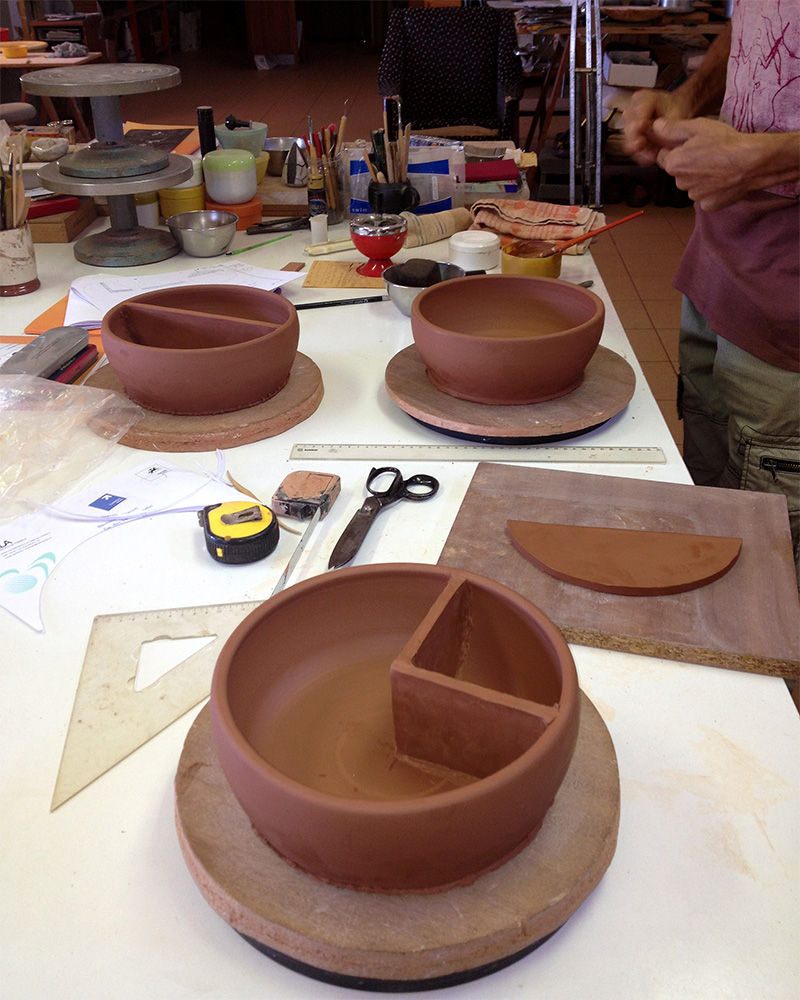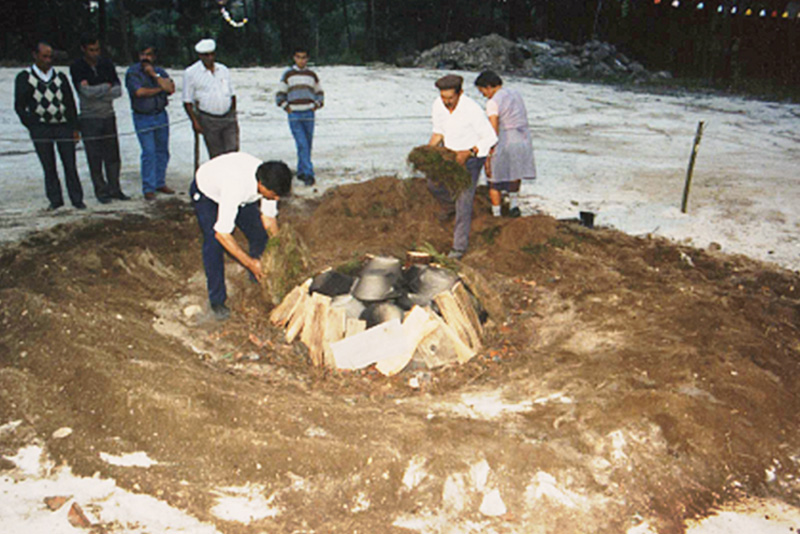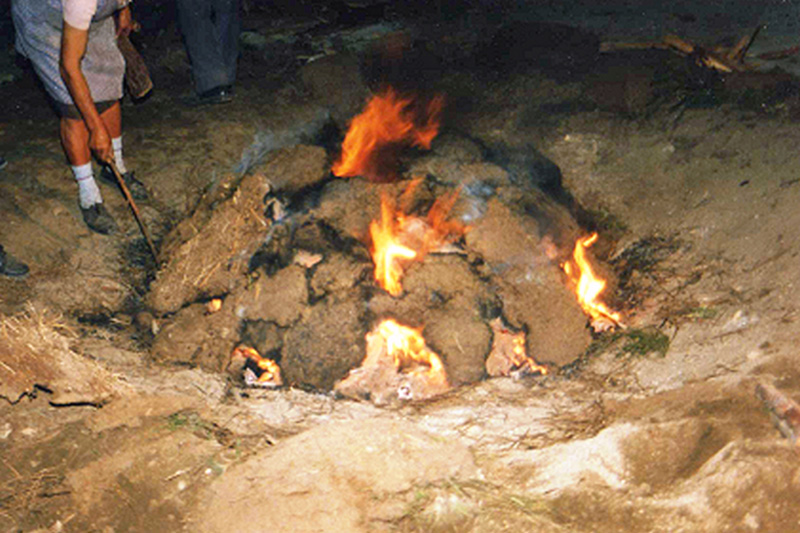Barro Negro
Up-and-coming Lisbon-based designer Sara de Campos spent the past two years researching the traditional Portuguese ceramic process of Barro Negro (Black Pottery). Only a few northern Portuguese potters still know and practice the venerable process, a means for creating utilitarian cookware, tableware, and food storage. The deep black surface arises from the firing technique, in which clay pots are buried in soil and covered with moss, straw, and leaves and then set aflame. De Campos collaborated with local artisans—many in their 70s and 80s—to create her new, multifunctional Black Pottery series. We spoke with de Campos this week to learn more about the project and her experience.
WC: How did your Black Pottery project start?
SDC: I am very interested in food and cooking, and I wanted to develop a project that would have an impact in tableware or in the act of eating. I rediscovered an ancient technique that produces black pottery, which I [originally] saw while traveling in the north of Portugal as a child with my parents. This pottery has always had a utilitarian function—as cookware, tableware, and storage containers for olives, olive oil, corn, wine, or water. It’s resistant to fire and to cold, so I thought it was perfect. The different divisions within each bowl offer undefined opportunities for functionality; the user is invited to imagine several purposes and food combinations.
WC: How did you meet the artisans who still practice this ancient technique?
SDC: I found two small villages in the north of Portugal—Bisalhães and Molelos— where potters still use this ancient technique. I went to both, and, ultimately, I ended up finding a couple of potters in Molelos, Xana Monteiro, and Carlos Lima who were interested in collaborating with me.
WC: What was it like working with them?
SDC: Design is not very understood in these remote regions; however, these potters are open-minded and it was easy working with them.
WC: How did the shapes of your pieces come to be?
SDC: I made small, clay models of the pieces that I wanted to produce, and I brought them and drawings to my first meeting with the artisans. They reproduced these as closely as possible.
WC: What are the steps involved in making these pieces?
SDC: First, we use a potter’s wheel to shape each vessel. Then, the divisions in clay are made by hand. After drying, which usually takes two weeks, we apply a process called brunir, which means using a small stone to give a more or less shiny finish. Finally, the pieces are ready to fire, and this is where the black color first appears, thanks to the traditional firing process, during which we bury the vessels in a hole and cover them in soil.
WC: What do you believe to be the value of traditional handcraft in today’s world?
SDC: Most handcraft is focused on a specific technique that took many years to develop and refine. In my opinion, it should be preserved, adapted, and developed to suit our current needs. Also, most handcraft processes are related to serious human needs—in some regions, in fact, to a question of survival—and the solutions are often sustainable and poetic in a way that can teach us a lot nowadays. With handcraft, we can also preserve a people’s significant cultural heritage.
*All images courtesy of Sara de Campos.

 Black Pottery #1 by Sara de Campos
Black Pottery #1 by Sara de Campos
 At the potter's wheel; photo courtesy of Sara de Campos
At the potter's wheel; photo courtesy of Sara de Campos
 In the workshop; photo courtesy of Sara de Campos
In the workshop; photo courtesy of Sara de Campos
 The traditional firing process of Barro Negro; photo © Xana Monteiro and Carlos Lima
The traditional firing process of Barro Negro; photo © Xana Monteiro and Carlos Lima
 The traditional firing process of Barro Negro; photo © Xana Monteiro and Carlos Lima
The traditional firing process of Barro Negro; photo © Xana Monteiro and Carlos Lima